
Become a member
Join today and help protect nature, beauty and history – for everyone, for ever. Enjoy access to more than 500 places with National Trust membership.
Outstanding 14th-century moated manor house, gardens and estate
Mote Road, Ivy Hatch, Sevenoaks, Kent, TN15 0NT
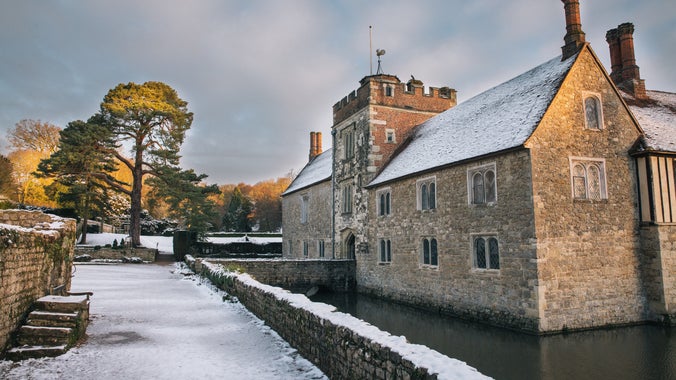
| Asset | Opening time |
|---|---|
| House | 11:00 - 16:00 |
| Café | 10:00 - 16:00 |
| Estate | Dawn - Dusk |
| Garden | 10:00 - 16:00 |
| Shop | 10:00 - 16:00 |
The house is open for 'A Timeless Christmas'. The gardens, café, shop and estate are open as normal. Last entry to the house and gardens is 3.30pm, closing at 4pm. Last entry to the café is 3.45pm, closing at 4pm. Booking is not required. Late night Christmas openings until 7pm are taking place on: Thursday 4 December, Friday 5 December, Thursday 11 December, Thursday 18 December and Friday 19 December.
| Ticket type | With Gift Aid | Without Gift Aid |
|---|---|---|
| Adult (18+) | £14.30 | £13.00 |
| Child (5-17) under 5s free | £7.20 | £6.50 |
| Family (2 Adults and up to 3 children) | £35.80 | £32.50 |
| 1 adult, 2 children | £21.50 | £19.50 |
| Group (Adult 18+) | £12.35 | |
| Group (Child 5-17) | £6.18 |
Visit the natural play area where the kids can splash in the stream, play with the chimes, balance on beams and stepping stones and sit on cute piggies.
There's a wide variety of second-hand books of all genres for all ages In Laundry Cottage and the Coach House.
Mote Café is open from 10am daily, serving tasty hot and cold food and drinks. Dogs are welcome in the outdoor seating area.
Free parking for National Trust members - please scan your card at car parking machine. £3 per vehicle for non-members. The car park has designated spaces for Blue Badge holders, along with family friendly parking.
Cycle racks can be found in the main car park.
Dogs on short leads are welcome in all areas of the property; except the natural play area, enclosed garden and house. Owners can bring their dog into the café to order but are asked to use the outside seating area to eat and drink. Dogs kept under close control are also welcome on the estate countryside walks. Assistance dogs are allowed in all spaces.
Six 11kW electric vehicle charging points are available in the car park. Chargers can be accessed using the mobile app, RFID card, or contactless payment device. Visit our EV charging partner, RAW Charging's website to download the app before your visit.
Electric vehicle charging point - more informationIntroductory talks about the house and garden tours take place daily from March to October (weather dependent and subject to volunteer availability).
The café kiosk is open seasonally and offers drinks and light refreshments including soft scoop ice cream.
Picnic tables are situated next to the café kiosk.
The shop is located within the visitor centre and stocks a range of new and seasonal products, including a variety of plants in the outdoor area.
Located by the Mote Café and the Coach House. Baby changing facilities and accessible toilets are available in both locations.
An accessible route is available through the garden and around South Lake. The ground floor of the house is accessible.
Two accessible toilets are available at the Mote Café and the Coach House.
A braille guide to the house is available - ask at the house welcome in the outer hall.
Parking for Blue Badge holders is available near the visitor centre.
Contact the visitor centre on arrival or call in advance on 01732 811732.
Available in the café and shop.
A large print guide to the house is available - ask at the house welcome in the outer hall.
Some of the corridors in the house are narrow due to the historic nature of the building.
The Tramper powered mobility scooter is available for visitors to use around the gardens and South Lake. Please call 01732 810378 for more information and to book in advance (line monitored Monday to Friday).
Paths in the garden may become slippery after rainfall, please take care and wear sturdy footwear.
The volunteer-driven shuttle buggy is available to transfer visitors to and from the house.
A virtual tour of the house is available - ask at the house welcome in the outer hall.
Manual wheelchairs are available for visitors to use around the ground floor of the house, gardens, shop and café. Please call 01732 810378 for more information and to book in advance (line monitored Monday to Friday).
Find out what's happening in the house, garden and estate this winter.
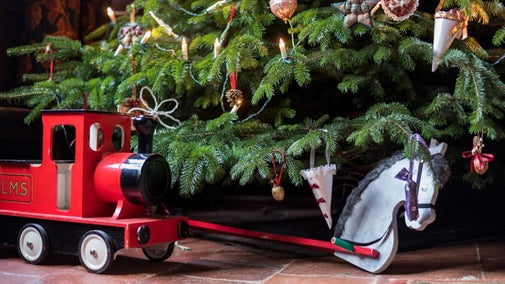
Enjoy the glitter and shimmer of Ightham's 'Timeless Christmas' until 7pm on selected December evenings. Wander through the beautifully-lit and decorated house, browse the shop for perfect presents and festive treats, listen to live music, and savour seasonal delights in the café.
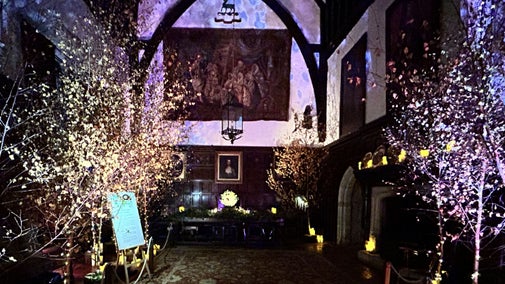
With the days drawing in and the temperatures starting to fall, it's time to start looking ahead to the festive season. Join us this Christmas as we time travel through 700 years of seasonal celebrations.
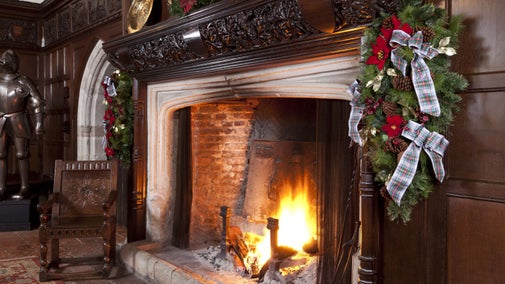
With walks, trails, a natural play area and acres of nature there is plenty to keep the family occupied on a visit to Ightham Mote this autumn and winter. Read on to find out how to get the best out of your visit.
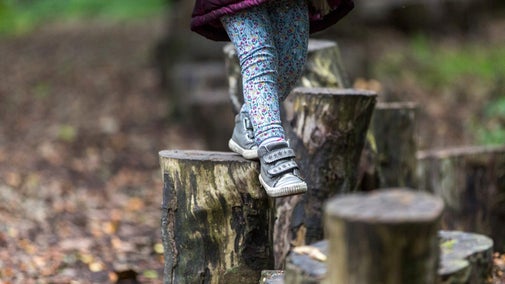
Ightham Mote is a two pawprint rated place. With so much space to explore your four-legged friend won’t be bored on a day out at Ightham Mote. Find out where they can go and what facilities are available on your visit.

Find out more about booking your group or school for a visit to Ightham Mote and the information you need to help you plan your trip.

Pop into the Mote Café for something tasty at end of a winter walk. In the shop you can pick up a special gift, plant or homewares. Don’t forget to take a look in the two second-hand bookshops.

Romantic moated manor house with 700 years of history, architecture and stories under one roof.
Nestled in a hidden valley, 14 acres of tranquil garden, pleasure grounds, orchard, water features, lakes and woodland.
Over 500 acres of landscape carved from woodland, in the Kent Downs Area of Outstanding Natural Beauty, with a variety of walking trails.
Home to the only Grade I listed dog kennel in the UK, built in 1890 for Dido, the St. Bernard by Sir Thomas Colyer-Fergusson.
Splash in the stream, play with the chimes, balance on beams and stepping stones and sit on cute wooden piggies.
The Mote Café is open daily, serving tasty hot and cold food and drinks. Dogs are welcome in the outdoor seating area.
Seasonal accessories and gifts, food and plants. Locally made products and souvenirs.
In Laundry Cottage and the Coach House, there's a wide variety of second-hand books of all genres for all ages.
With the days drawing in and the temperatures starting to fall, it's time to start looking ahead to the festive season. Join us this Christmas as we time travel through 700 years of seasonal celebrations.

With walks, trails, a natural play area and acres of nature there is plenty to keep the family occupied on a visit to Ightham Mote this autumn and winter. Read on to find out how to get the best out of your visit.

Make the most of the garden at Ightham Mote as we move from summer into autumn. There’s still plenty of colour and interesting things to be seen as the flowers continue to bloom.
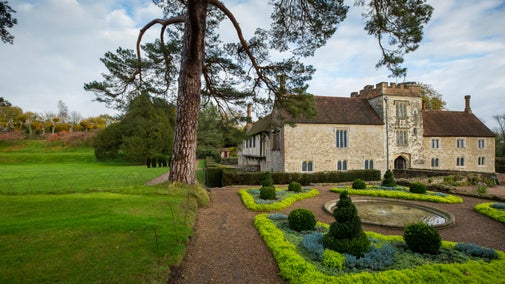
Enter this medieval half-timbered house across a cobbled courtyard and into the hushed interior. Discover dark wood panelling, huge fireplaces and a mix of furnishings inside.

Enjoy the sights and sounds of the season across the Ightham Mote estate.
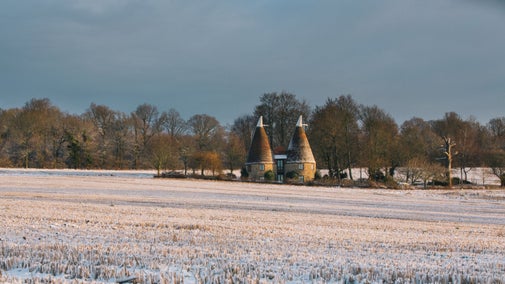
Pop into the Mote Café for something tasty at end of a winter walk. In the shop you can pick up a special gift, plant or homewares. Don’t forget to take a look in the two second-hand bookshops.

This circular walk from Ightham Mote passes along the Greensand Way, through areas of outstanding natural beauty to Knole Park and back to Ightham Mote.

Enjoy a picturesque circular walk from Ightham to Oldbury Hill, passing through an area of mixed woodland as well as fish ponds and an old quarry.

This historical circular walk links two National Trust places dating to medieval times, while also taking you through the ancient woodland of Scathes Wood and into Fairlawne Estate.

Enjoy the Kentish countryside from the Ightham Mote estate as you walk the periphery of a large part of its 580 acres. The walk incorporates Scathes Wood, the Greensand Way, Wilmot Hill and Broadhoath Wood.
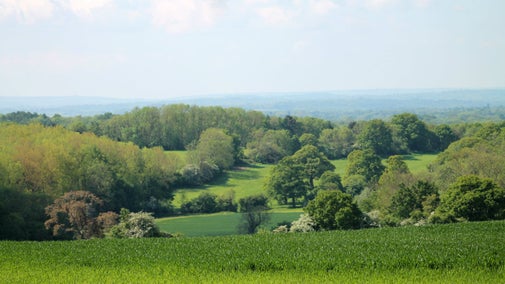

A peaceful woodland campsite near National Trust attractions, and an hour from London by train.
Join Dido the Dog on a tail-wagging Christmas Adventure at Ightham Mote
Get the Christmas holidays off to a flying start with a festive afternoon of creativity making Christmas crackers and sparkling stars.
Celebrate 700 years of seasonal spirit and festive fun at Ightham Mote this Christmas.
Blow away the cobwebs and get out in nature for a post-Christmas guided estate walk.
Hidden away in a secluded Kent valley, is this perfectly preserved medieval moated manor house. Emerging from the natural landscape almost 700 years ago, Ightham Mote is built from Kentish ragstone and great Wealden oaks. While its architecture and decoration trace the development of the English country house, its owners provide the stories of a once-cherished family home, evoking a deep sense of history. In the tranquil gardens there are streams and lakes fed by natural springs, an orchard, flower borders and a cutting garden. The wider estate offers walks with secret glades and countryside views.
Uncover the 700-year history of this fascinating medieval house and estate. Discover all about the owners that shaped it over the centuries, their connections and lifestyles.

Explore the objects and works of art we care for at Ightham Mote on the National Trust Collections website.

The enigmatic face of Elsie Palmer, one of renowned artist John Singer Sargent’s most famous subjects, has returned to the English country house where he painted her.

From the annual winter clean to one of the National Trust’s largest conservation projects, find out more about how Ightham Mode is cared for and what goes on behind the scenes.

We’ve reached a major milestone in our ambitious project to secure the future of Ightham Mote. From a sustainable new Visitor Centre to upgraded paths and facilities, discover what’s new and what’s still to come.
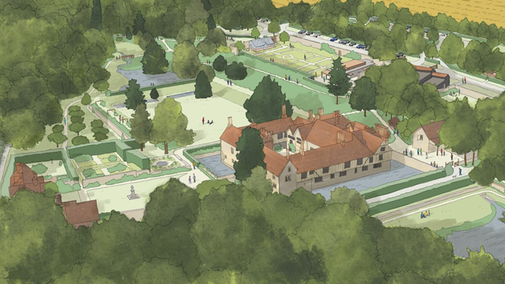
Find out more about volunteering at Ightham Mote and how you can play your part in looking after 700 years’ worth of history and bringing its stories to life.


Join today and help protect nature, beauty and history – for everyone, for ever. Enjoy access to more than 500 places with National Trust membership.
By sharing your email address you’re agreeing to receive marketing emails from the National Trust and confirm you’re 18 years old or over. Please see our for more information on how we look after your personal data.